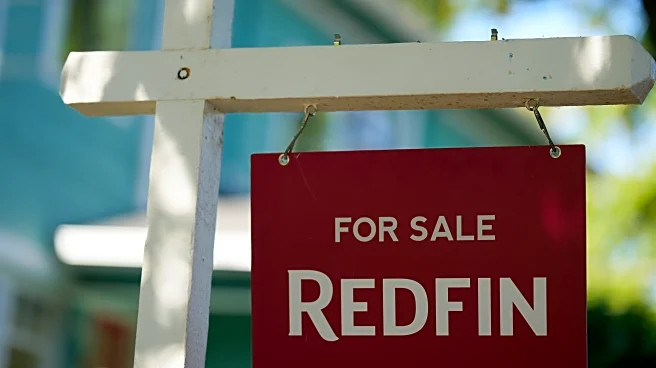What is the story about?
What's Happening?
The average rate on a 30-year U.S. mortgage has decreased to 6.58%, marking the lowest level in nearly 10 months, according to Freddie Mac. This decline offers potential homebuyers increased purchasing power, potentially revitalizing a stagnant housing market. The rate has fallen from 6.63% last week and is slightly higher than the 6.49% rate from a year ago. Additionally, the average rate for 15-year fixed-rate mortgages, often used for refinancing, has also decreased to 5.71% from 5.75% last week. The drop in rates is influenced by factors such as the Federal Reserve's interest rate policies and bond market expectations. The 10-year Treasury yield, a key indicator for mortgage pricing, was at 4.29% on Thursday, slightly up from 4.24% the previous day.
Why It's Important?
The reduction in mortgage rates is significant for the U.S. housing market, which has been experiencing a sales slump since early 2022 due to elevated rates. Lower borrowing costs could encourage more homebuyers to enter the market, potentially increasing home sales and stimulating economic activity. However, affordability remains a challenge, as the median sales price of previously occupied homes reached a record high of $435,300 in June. The recent rate drop has also led to a surge in refinancing applications, with homeowners seeking to capitalize on lower rates. This trend could lead to increased cash-out refinancing, allowing homeowners to access equity gains from rising home prices.
What's Next?
Economists predict that the average rate on a 30-year mortgage will remain above 6% throughout the year, with forecasts suggesting it may ease to around 6.4% by year-end. While this may not significantly impact affordability, it could encourage more homebuyers to re-enter the market. The Federal Reserve's potential rate cuts could further influence mortgage rates, although higher inflation could counteract these effects by driving bond yields and mortgage rates upward. The housing market may see more activity in regions like the Sunbelt and West, where declining home prices and increased listings favor buyers.
Beyond the Headlines
The drop in mortgage rates highlights broader economic dynamics, including the interplay between Federal Reserve policies, inflation, and consumer behavior. As homeowners increasingly opt for refinancing, the trend underscores the importance of financial planning and equity management in a fluctuating market. Additionally, the housing market's response to changing rates may reflect broader shifts in economic confidence and consumer spending patterns.
AI Generated Content
Do you find this article useful?













